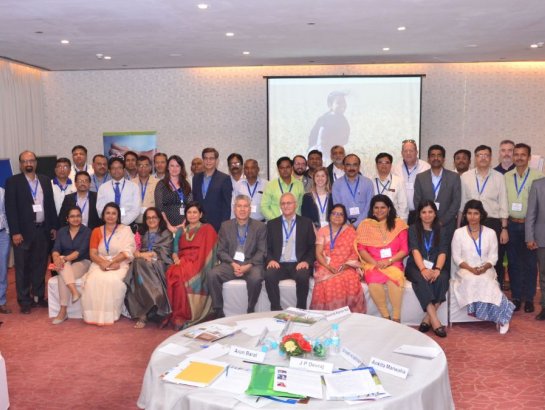“We want to lead the way to get more nutritious foods on the table.”
The speaker was Arun Baral, chief financial officer of HarvestPlus. His sentiment was shared by the 60 food industry representatives and business leaders who attended the biofortified foods workshop in New Delhi’s Park Hotel.
Following almost ten years of product development and delivery efforts from the HarvestPlus India program, almost half a million Indian farming households were estimated to be growing, consuming, and benefiting from zinc-biofortified wheat and iron-biofortified pearl millet by the end of 2018. In 2018 alone, about 300,000 farming households have been recorded as having procured seeds of these biofortified crops. There are currently nine varieties of iron pearl millet, five of zinc wheat, and one of both iron-zinc sorghum and zinc rice available. Now that crops have been released, attention is turning to exploring opportunities to create a more nutritious food system.
India loses over US$12 billion in GDP annually to vitamin and mineral deficiencies. Biofortification has the potential to become a critical element in the country’s quest for Kuposhan Mukt Bharat (Malnutrition Free India) by 2022; last year the Indian Council for Agricultural Research set minimum levels of iron and zinc for pearl millet varieties—signaling nutrition as a priority for breeders.
But ending hidden hunger and managing a profitable food business can be done simultaneously and sustainably. By addressing the barriers to embedding biofortification into the food system, HarvestPlus aims to increase the access families and communities have to nutritious seeds and foods.
“We will increase the number of farmers in India growing and consuming zinc rice, zinc wheat, and iron pearl millet by creating a market for these foods,” said Wolf Pfeiffer, director of research and development at HarvestPlus.
Following the success of similar food industry workshops, attendees convened with the aim of bringing biofortified food products to more Indian consumers by identifying sustainable routes to market. The goal was to overcome barriers and identify opportunities such as ensuring supply chain integrity and meeting manufacturing standards.
Speakers and attendees spanned the supply chain, from agricultural researchers, seed producers and sellers, farmers, aggregators, millers and food manufacturers, to marketers, consumer researchers, advertisers, communicators, and advocates. Discussions were designed to determine how to best address potential barriers and identify motivating factors that will engage and intrigue consumers and businesses. Participants committed to finding solutions and partners to address bottlenecks in the supply chain.
“As farmers we are proud to be actively involved with the HarvestPlus program since its inception…in testing new zinc wheat varieties, and seed production. Now we are planning to establish a flour mill,” said attendee and partnering farmer Harbansh Singh.
The pioneer of biofortification, HarvestPlus continues to share knowledge and facilitate connections among the growing network of partners to drive and connect supply and demand.
“Let’s work together for a nutrition revolution,” said keynote speaker and chef Ranveer Brar.
For more information about the meeting, please contact Jenny Walton or Katrina Boyd.
